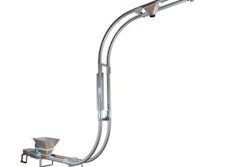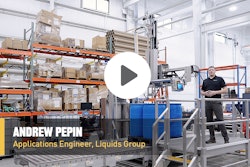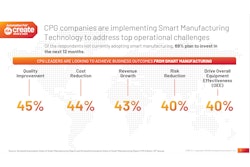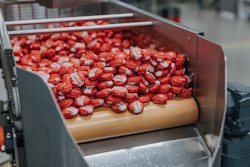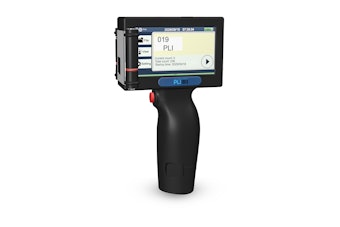“An expanding customer base meant we needed to make more product, and to do that we needed a new plant.”
With that succinct summation, CEO Bob Shearer of Shearer’s Foods explains the background behind the Millennium Manufacturing Facility, a 110,000-sq-ft snack food manufacturing plant that his Brewster, OH-based firm just opened in Massillon, OH. Shearer’s growth has been fueled not only by the popularity of its own-brand products sold throughout Ohio and surrounding states, but also by contract manufacturing and by a private-label business that includes some of the nation’s largest retailers.
Massillon, it should be noted, is not just any snack plant. As a bold banner in the packaging hall proudly proclaims, it’s “The First LEED Platinum Snack Food Manufacturing Plant in the World!” That is to say, the U.S. Green Building Council, under its Leadership in Energy and Environmental Design program, granted its highest level of certification to the Massillon plant.
“We’re members of the community we work and live in, and we felt it was our duty to be proactive about sustainability,” says Shearer when asked about the LEED certification. “One of the early challenges we faced is that, because no snack plant had ever been LEED-certified, there was no baseline to work off of where reductions in electricity, water, and gas are concerned. So we had some work to do just to establish those baselines.”
Like other LEED-certified plants, Massillon is distinguished by optimal insulation, high-efficiency lighting, automatic light dimmers, and heat-recovery systems that keep energy costs down. It also uses an oven in its tortilla chip operation that requires 47% less gas than ovens typically used throughout Shearer’s five plants. Also impressive is that less than 1.25% of waste produced in the plant winds up in a landfill. Zero landfill is the goal.
20 baggers
Packaging machinery, which occupies a large portion of the new plant, comes largely from tna. A total of 20 bagger/scale combinations stand in two rows that face each other in the central packaging hall. Six are used for kettle chips, seven are used for potato chips produced on a continuous fryer, five are for tortilla chips, and two are for snacks made on a twin extruder. All 20 bagger/scale combinations are essentially the same: tna robag 3 baggers fed by Model 514 Delta 1 14-head combination scales built for tna by Yamato.
“We established what we wanted and then just duplicated it, more or less, 20 times,” says director of operations Ken Brower. “It makes sense from a maintenance and spare parts standpoint because all 20 bagging systems are the same.”
Three or four significant advancements in packaging are in evidence at the Massillon plant. Possibly the most fascinating is the tna roflo VM 3 electromagnetically driven horizontal-motion chip distribution system. It’s the means by which potato or tortilla chips are proportionately and gently distributed by way of vibrating pans from a mass flow to individual scale/bagger cells. Typically the mass flow of chips is distributed to multiple scale/bagger cells by funneling chips in considerable quantity down a straightline main conveyor and using a series of feed conveyors—one for every scale—to take chips at a right angle from the main conveyor to the scales. Gates open or close to allow the chips onto these feed conveyors according to signals sent by the scales.
A key drawback to such a system, says Brower, is that when the gates open and close, some chips are inevitably damaged. The VM 3, on the other hand, is gateless, so damage is greatly reduced.
The key to its operating principle is that the conveyor pans pivot (see video). Take, for example, the VM 3 system assigned to potato chips made on Shearer’s continuous fryer line. It consists of seven pivoting distribution pans. It receives freshly fried chips at about 4,000 pounds per hour and must distribute them proportionately to seven scales.
All the chips arrive from the fryer on distribution pan #1 (See Figure 1 on p. 96). If Scale Number 1 is in need of chips, distribution pan #1 pivots left and drops chips onto the feed conveyor (B in Figure 1) that leads to Scale Number 1. As soon as Scale Number 1 has all the chips it needs, distribution pan #1 pivots back to the right to drop chips onto distribution pan # 2 (C in Figure 1), which runs perpendicular to distribution pan #1. If Scale Number 2 is in need of chips, distribution pan # 2 pivots left to drop chips onto a feed conveyor leading to Scale Number 2. But if Scale Number 2 doesn’t need more chips, distribution pan # 2 sends chips to distribution pan # 3, which also has the option of pivoting to feed Scale Number 3 or sending chips straight down the line to distribution pan # 4. Figure 2 provides a good look at how the distribution pans are busy moving chips forward to each other as well as dropping chips off onto feed conveyors that run at a right angle into the scales.
“The vibration of the pans can be sped up automatically if there are lots of upstream chips available,” says Brower. “But if chips are in short supply, the system will proportion out to each scale the chips it has available, and it will slow down the scales and baggers as it needs to. It might even starve the last bagger and then reactivate it when sufficient chips are available.”
Intelligent flavoring
Another “best-in-breed” example found in the packaging operation is the intelli-flav 2 flavoring system. A key component in it is a load cell that weighs the chips as they flow into the combination scale from the chip distribution system. This weight is communicated to the dispenser that drops seasonings into the chips so that the dispenser’s auger will dispense seasoning according to the real-time amount of chips that are being conveyed into the Yamato combination scale.
“It’s much more accurate than augering in the seasonings volumetrically,” says Ken Brower.
The third notable advancement in packaging operations at Massillon is the use of advanced Information Technology solutions to gain real-time visibility into packaging machine efficiency. Wonderware software from Invensys Operations Management, for example, serves as a data historian. It constantly collects bagging speeds, line faults, production problems—anything a plant manager might want in real time to help make the plant more efficient.
“Our efforts at capturing real-time data began in the Brewster plant, but there we were more focused on processing,” says Brower. “Now we’re linking it all together to see how processing and packaging can be more tightly integrated and, consequently, better optimized. HMI terminals throughout the plant let us see exactly how a line is running, exactly what the poundage draw is on each bagger. We see complete data from the beginning of processing to the end of packaging. Not only can I look at an individual bagger’s efficiencies, but we also have these things linked to our Management Information System, which allows me to draw several different reports in terms of bagger efficiencies, weighing accuracies, and those types of things.
“This plant is more networked than what we’ve had in the past,” Brower continues. “It used to be that machine operators would turn in their paperwork and it would go into a file. Later, that information would be keystroked into some system that others could share. But it left too many opportunities for mistakes. Doing it electronically and automatically is much better.
“The other nice thing about all of this is that the operators can see so much at the HMI screen on, for instance, a tna bagger. They used to have to go upstairs to the mezzanine level where the scales are to see how it was performing or if something was wrong. Now they can see it by looking at the HMI on the bagger. It means you don’t have to physically walk the line to know how parts of it are performing. It makes troubleshooting so much easier.” Brower notes that one result of this added visibility is that each operator can handle four or five weigher/bagger cells.
Another software solution deployed at Massillon comes from Infinity QS. “It’s a quality system on the plant floor that overlaps a good deal with the Wonderware program,” says Brower. “It records giveaway and helps us do Statistical Process Control.”
Dynamic Scheduler
Part of the Infinity QS program is a module called Dynamic Scheduler. It provides operators with a shop-floor checklist for quality checks that they make on one of the many HMI panels. Large windows and a user-friendly graphical interface automatically remind operators when quality data is needed. An easy-to-read schedule shows the operators a time-ordered list of the day’s required checks. Each check is accompanied by a countdown clock; the operator always knows how much time remains until the next check is due. Dynamic Scheduler takes the guesswork out of monitoring quality checks and automatically notifies key personnel by email if data collection is not performed.
The business benefit gained? “The added visibility means we have more predictability, and that means we don’t have to build safety stock in inventory,” says Brower. “It lets us prepare product closer to the time it’s scheduled to be shipped.”
It also helped the Massillon plant qualify for its Platinum LEED status. “The Wonderware program has an energy monitoring module that lets us track energy consumption in real time, which is always better than tracking it after the fact,” says Scott Heldreth, senior vice president of operations at Shearer’s.
Safety is enhanced, too, through these kinds of software solutions, adds Heldreth. “If a gas valve is left open or a conveyor is running when it shouldn’t be, these things are now immediately obvious and viewable on an HMI screen.”
And the next step? “We’re looking at linking downtime data with our CMMS [Computerized Maintenance Management System] to be able to alert the Maintenance Department to things that need to be addressed,” says Heldreth. The CMMS system in place, he adds, is from Maintenance Connection.
Looking back, Heldreth describes the use of IT at Massillon as something that built upon lessons learned at the Brewster plant. “At Brewster we waded into HMI and learned some valuable lessons about the recording of real-time data for subsequent analysis,” says Heldreth. “But we weren’t really controlling any of the machines. Massillon is different. We do a lot of controlling there, anything from baggers to silos to corn tanks. The pivoting chip distribution pans are a perfect example. Real-time feedback from the baggers travels over the network to the PLCs that control those distribution pans so that product can be delivered to the baggers at the pace they require.”




